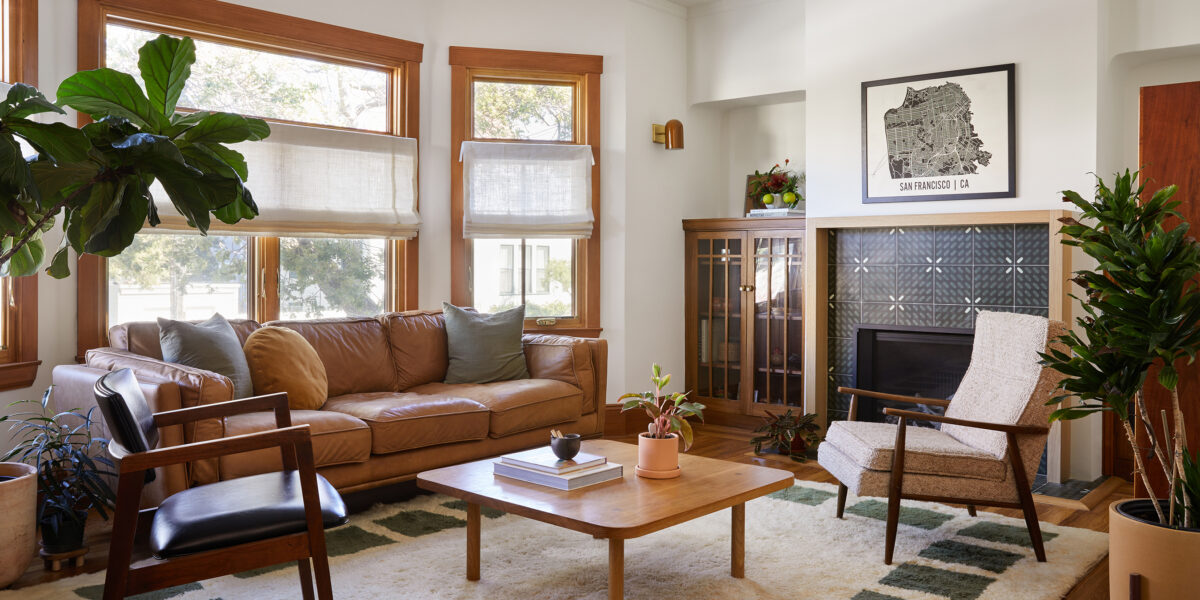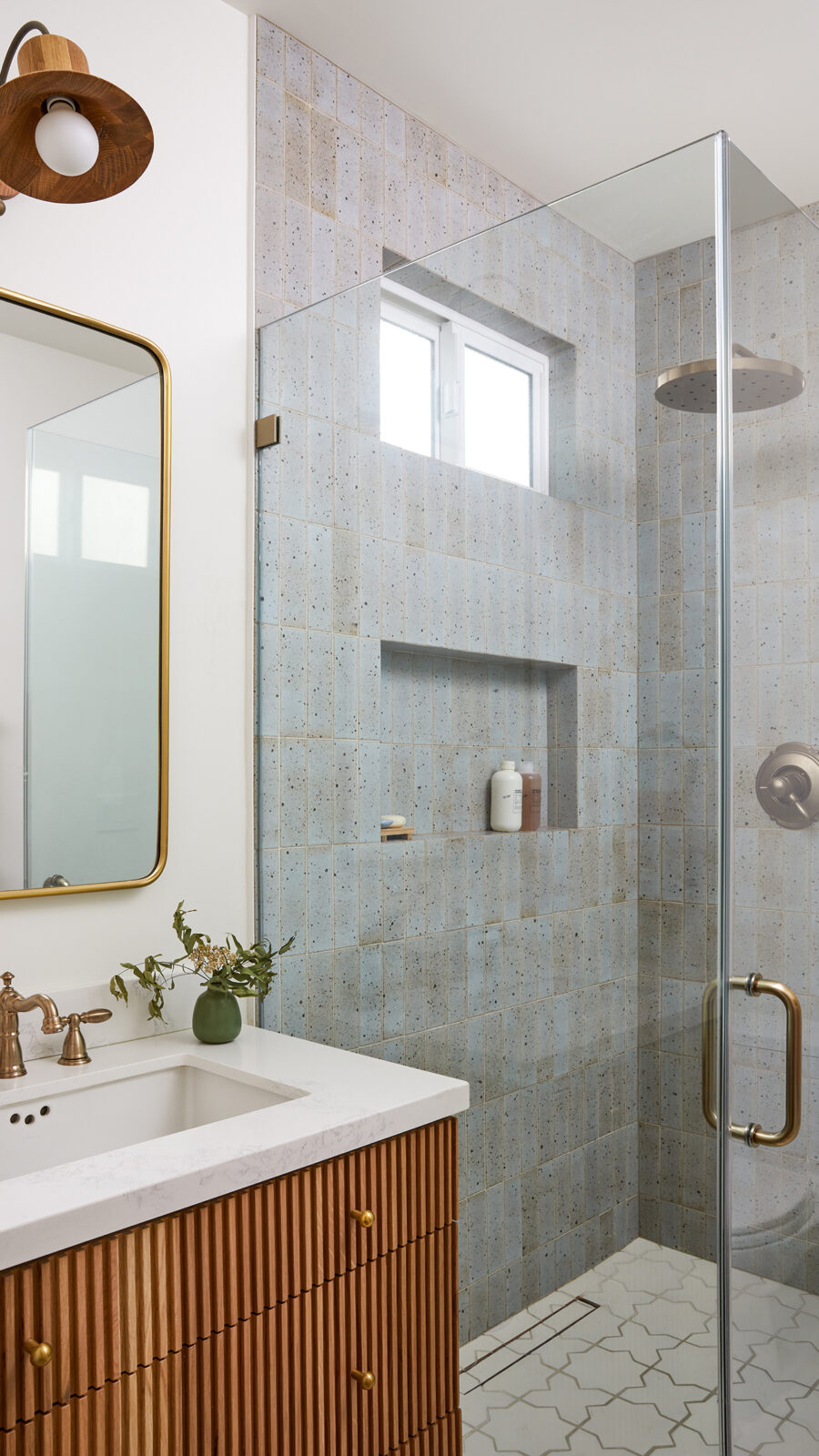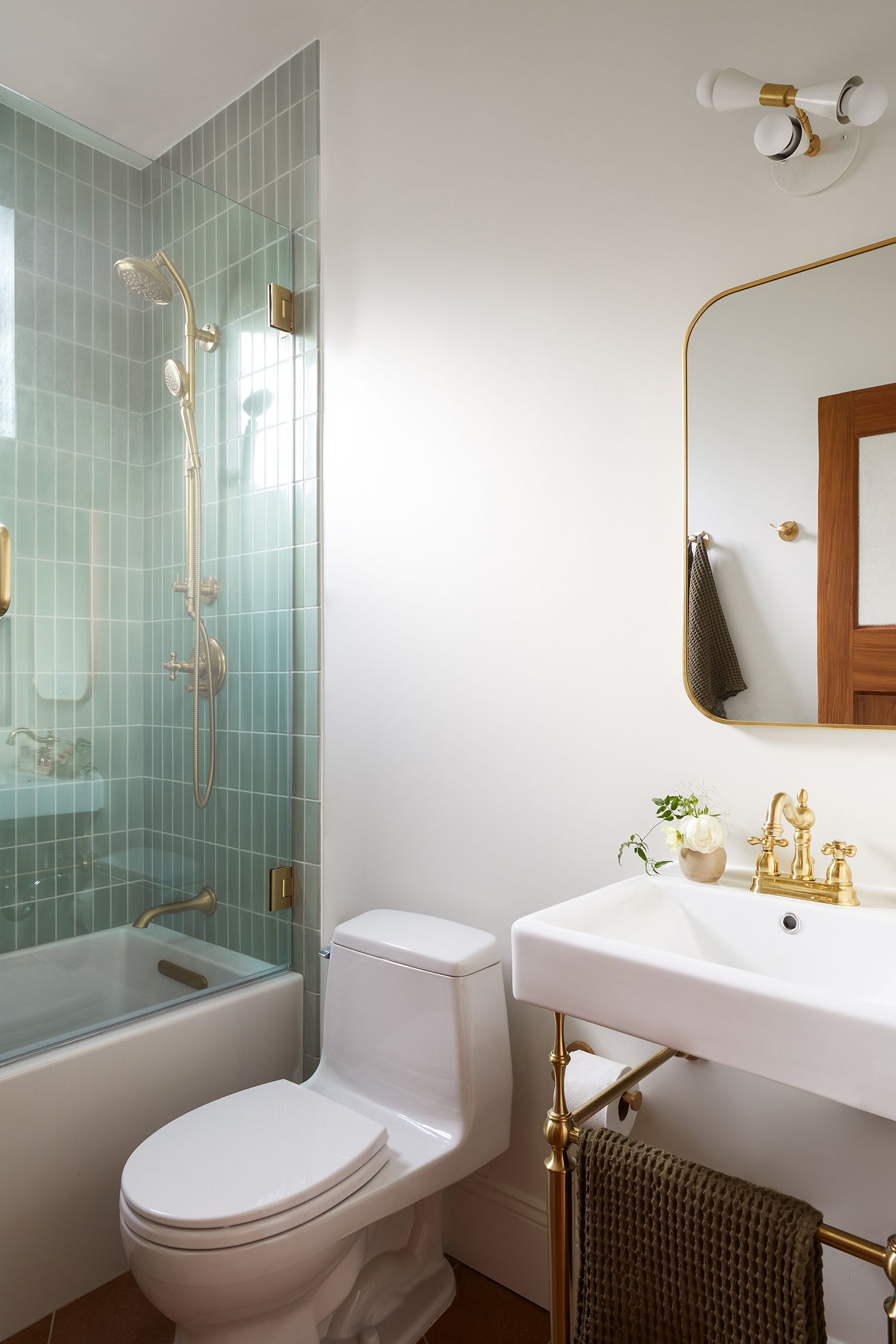
This San Francisco Edwardian Is a Master Class on How to Update an Old Home Without Stripping Its Character
The right balance of original details, plus modern pattern and color.

Margaret Austin
An old home inevitably means there’s going to be some modern updates needed. But the real challenge when it comes to renovating older homes is balancing the modern with the historic and interesting features that give it character. This San Francisco Edwardian—over a century old—was no different. The two bedroom, one-and-a-half bathroom home still had many of its original architectural details that gave it that classic San Francisco charm and character, but there were parts that needed updating. The windows were old and unsafe and needed to be replaced. Plus, all of the rooms were small, particularly the odd-shaped kitchen, pint-sized powder bathroom, and tiny pantry closet.
The owners—a newly engaged couple—reached out to interior designer Cathie Hong for help. “They wanted to update their home to suit their lifestyle while still retaining the historical character of the home, primarily found in the original wooden baseboards, moulding, doors, and trim,” she says. “There were a couple of original wood built-in cabinets flanking the fireplace that they wanted to preserve, as well as some of the interior doors with obscure glass and crystal doorknobs.” Ultimately, Hong says, the homeowners wanted the house to feel comfortable, understated, earthy and natural, clean but with lots of texture and shapes, and they needed it to make thoughtful use of the small space.

Margaret Austin
As you might imagine, keeping the character and some of the original features in an old home, while simultaneously updating it for the present time can lead to some challenges. One of those challenges was replicating that original wood stain. “We refinished and re-stained all of the hardwood floors, but they turned out a little brighter than what we had expected,” she explains. “Then there were many areas where we had to purchase new wood doors or replace and add wood casing and trim to match the original. The clients joke that they must have bought every single stain sample option from the paint store to try to find ‘the one.’ In the end, we layered multiple stains on top of each other to get the color we liked.”
In addition to the stain, preserving the unique doors with original glass proved to be an obstacle, too. “Once they were sanded down, we discovered that they were made out of gumwood, which has a mottled and unusual texture that didn’t match the rest of the house,” Hong says. “The clients miraculously found a specialty faux wood painter who was able to paint a faux wood grain onto those two doors to make them match the rest of the house. It was honestly shocking how realistic they looked; I would never have been able to tell if I didn’t know.”

Margaret Austin
Hong and team worked hard to preserve those features, while also incorporating colorful accents, patterns, and shapes that don’t feel too modern or out of place. Striking the right balance with pattern can be tricky sometimes, but Hong pulls it off so well in this space—she says it can add a lot of dimension, but she tries to be mindful of scale and color. “In the communal living spaces, there were a lot of white walls and wood trim and wood floors, so it felt appropriate to add in a bold and graphic dining room wallpaper to ground and differentiate that room, since you can see it from every adjacent room in the house,” she adds. Another example of the balancing act can be found in both bathrooms, where Hong and team paired a uniquely shaped tile on the floor with a more modern stacked rectangular tile on the walls to keep it from being overly busy.

Margaret Austin
As you look at each room, you can see how Hong carefully balances the old and new. In the living room, the design team kept the footprint pretty much the same and maintained the originally floors and built-ins. The fireplace got an update with encaustic cement geometric tile in an olive green that complemented the rest of the home’s color palette. “We were able to snag the very last run of this tile before it was discontinued, and it really added a lot of personality to this room,” she adds.
Since the dining room is the center of the house and connects the kitchen, front entry, and living room with the bedrooms, Hong made it a statement room with striking and moody Abnormals Anonymous wallpaper and a Lawson-Fenning chandelier.

Margaret Austin
The kitchen might have been the hardest room to figure out because of its odd layout that prevented the design team from doing a standard L-shaped space with an island. “The previous layout felt extremely cramped with the cabinets turning into themselves, an odd wall of very shallow cabinets that proved non-functional, and very little workspace for two people to be in the kitchen at the same time,” Hong says. “They also had an unusually placed breakfast nook right next to the small kitchen. We eliminated the nook and spread the kitchen cabinets out so the sink and dishwasher could be in its own zone, allowing one person to be cooking while another was washing. We also widened the pass-through between the kitchen and dining room to create a more open feel and had our contractor mimic the original wood casing around the walkway to make it look original and intentional.” More traditional-style plumbing fixtures were added to match the home’s architectural style, and warm and textured Zellige tile backsplash gives depth and dimension.

Margaret Austin
And that tiny powder room Hong mentioned earlier? It became a full-size primary bathroom. The other bathroom (which is now the guest one) had a very cramped stall shower plus a separate bathtub and no shower head, so Hong and team removed the stall and converted the bathtub to a shower/tub combo. “The clients were fond of the traditional-looking pedestal sink that we removed from the original powder bathroom, so we incorporated a similar one into the design of the guest bathroom,” Hong explains. “Since we went more neutral in the primary bathroom, we went bolder with Fireclay Rosemary tiles in this shower and Bedrosians terracotta hex tiles on the floor.”

Margaret Austin
Lastly, the back room of the house has a bold paint scheme, which feels fitting with the clients’ plant collection.
It’s no surprise that the clients really love the finished design. “It’s a small space, and they’re so pleased that every square foot is maximized and holds a purpose. They have told me on multiple occasions how happy they are with their house and that they often look around and admire all of the details,” Hong says.
Read the Current Issue Here!
Get one year of Sunset—and all kinds of bonuses—for just $29.95. Subscribe now!
